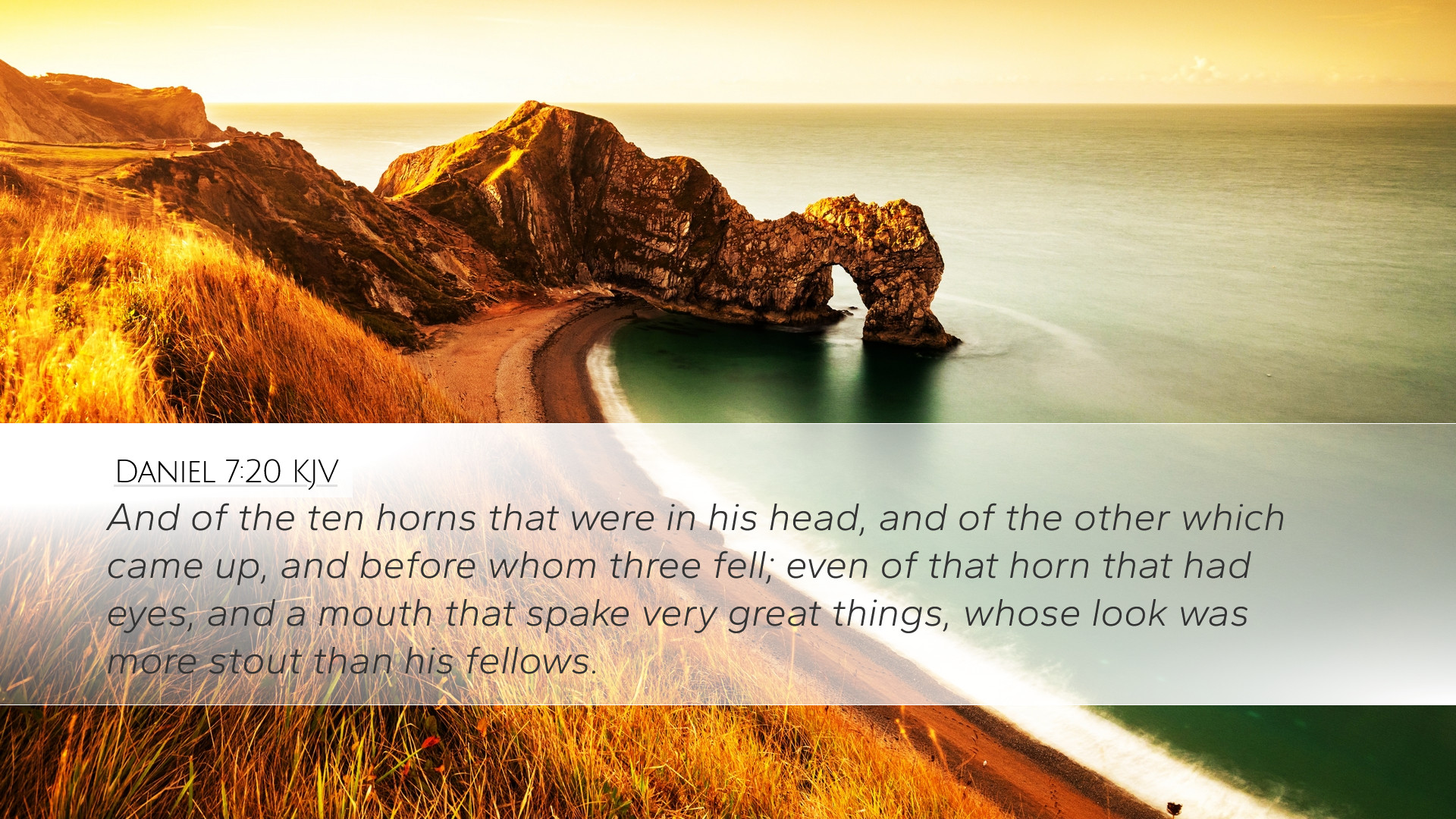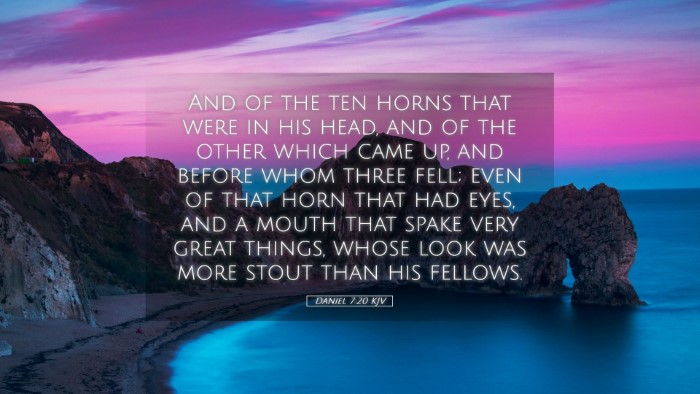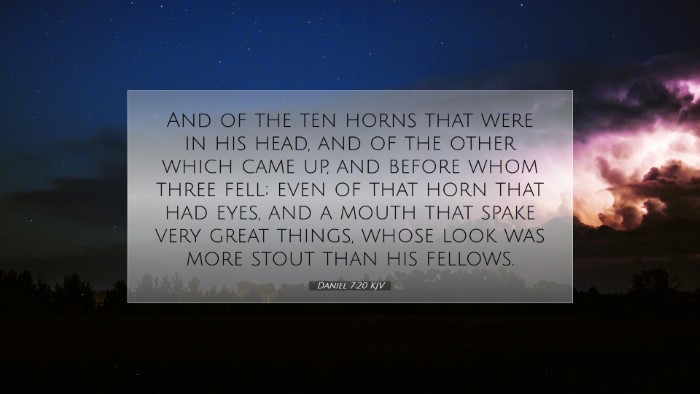Commentary on Daniel 7:20
Verse Context: Daniel 7:20 states, "And of the ten horns that were in his head, and of the other which came up, and before whom three fell; even of that horn that had eyes, and a mouth that spake very great things, whose look was more stout than his fellows."
Introduction
This verse is a critical component of Daniel's apocalyptic vision, in which he describes the four great beasts emerging from the sea. The ten horns represent ten kings or kingdoms that arise from the beast, while the other horn signifies a distinct power that emerges among them. The imagery is rich in symbolism and prophetic significance, drawing the attention of scholars and theologians alike.
Commentary Insights
Overview of Horns in Daniel's Vision
Matthew Henry notes that the horns symbolize kingdoms or rulers that arise from a particular political structure. The number ten indicates completeness or totality within those reigns. The emergence of one horn that possesses unique attributes—eyes and a mouth—suggests a ruling power that not only exerts political might but also possesses intelligence and arrogance.
The Horn with Eyes and a Mouth
Albert Barnes emphasizes the significance of the horn having "eyes" symbolizing insight and intelligence, while the "mouth that spake very great things" reflects the pride and blasphemy that often accompanies such power. This horn's rhetoric is not merely boastful; it opposes the Most High and challenges the established order of God’s people, reflecting a deeper spiritual conflict.
Comparison and Contrast
Adam Clarke draws a parallel with historical and contemporary rulers who exhibit similar traits—a capacity for self-aggrandizement and the promulgation of egregious ideologies. The horn’s assertions are those "whose look was more stout than his fellows," indicating a forceful and imposing presence that seeks to dominate the surrounding powers.
Theological Implications
The imagery in this verse underlines the theme of divine sovereignty over earthly kingdoms. Look at it through the lens of Isaiah 40:21-22, which reminds believers of God's ultimate authority. The aggressive posture of this horn symbolizes the perpetual struggle believers face with the forces that rise against divine truth.
Application for Believers
Pastors and theologians might reflect on how this text serves as a warning against the prideful ambition that often characterizes human rulers and leaders. Henry encourages readers to cultivate humility and discernment, remaining steadfast in faith despite overwhelming worldly pressures. The spiritual battle implied in this verse is a call to ongoing vigilance and prayer among the faithful.
Conclusion
Daniel 7:20 encapsulates the tension between earthly power and divine authority. The prophetic imagery encourages believers to recognize the temporality of worldly kingdoms and the eventual triumph of God's eternal kingdom. Engaging with this text invites a critical reflection on contemporary leadership and encourages steadfastness in faith, providing a rich ground for theological reflection and pastoral application.
References from Public Domain Commentaries
- Henry, Matthew. Matthew Henry's Commentary on the Whole Bible.
- Barnes, Albert. Notes on the Old Testament: Daniel.
- Clarke, Adam. Adam Clarke's Commentary on the Bible.


